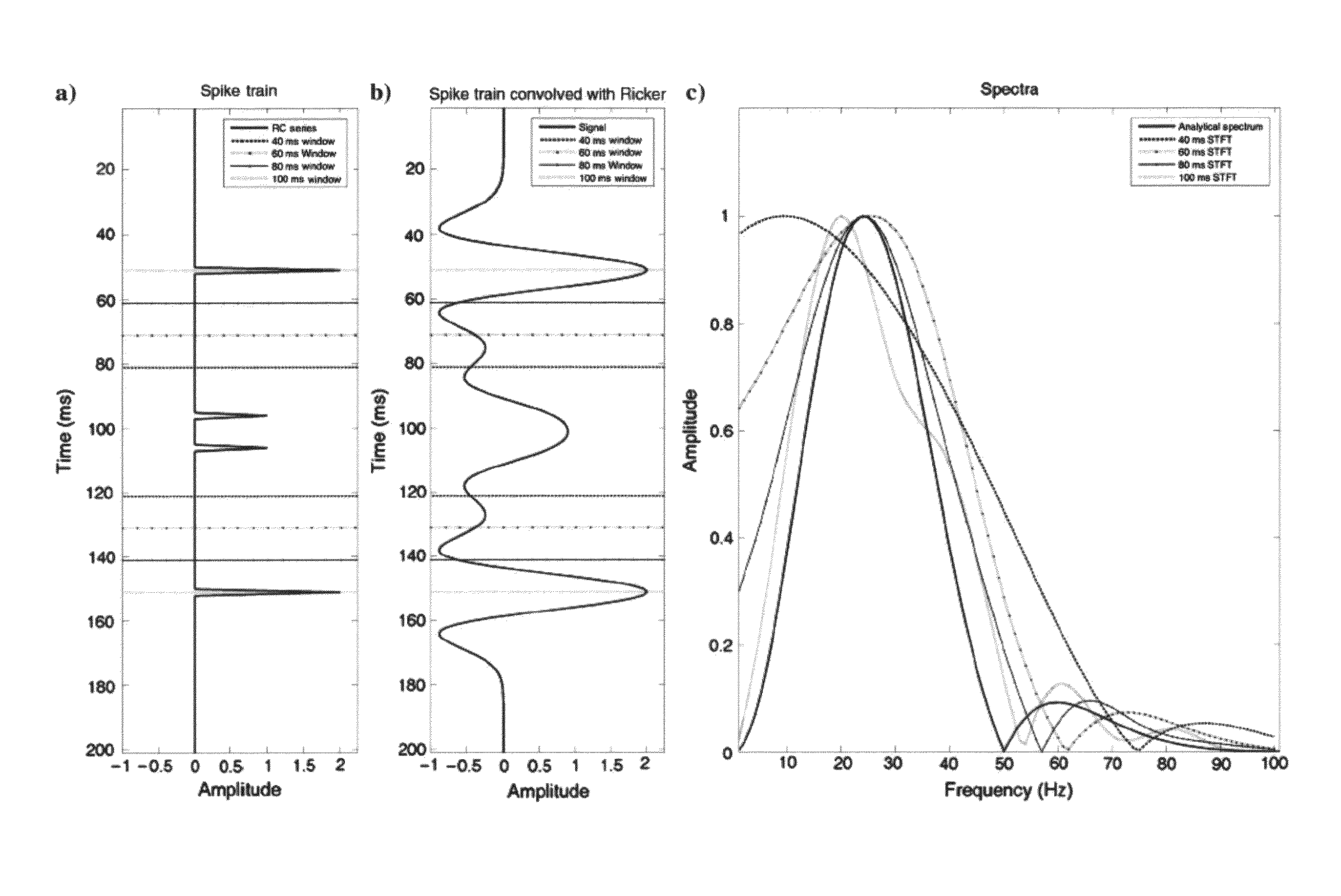System and method for constrained least-squares spectral processing and analysis of seismic data
- Summary
- Abstract
- Description
- Claims
- Application Information
AI Technical Summary
Benefits of technology
Problems solved by technology
Method used
Image
Examples
Embodiment Construction
[0041]Fourier Transform
[0042]The Fourier Transform is the mathematical basis of the STFT used in spectral decomposition. The Fourier Transform projects infinite sinusoidal bases on the signal and is thus the LMSE solution for the Fourier Series coefficients:
G(f)=∫-∞+∞g(t)-2πftt,(1)
where t is time, f is frequency, g(t) is the continuous time signal, and G(f) is the continuous complex spectrum. This simple projection of the bases onto the time series is applicable because the bases are infinite and thus orthogonal. The Fourier Transform spectrum is continuous and aperiodic in time and frequency (i.e. there are no periodic frequency wrapping effects in the limit dt→0). In digital applications, however, use of the Discrete Fourier Transform (DFT) assumes discretely sampled and periodic series in both the time and frequency domains.
[0043]The DFT is the modification of the Fourier Transform for application to discrete signals. In computing the DFT, the sinusoidal basis functions are only ...
PUM
 Login to View More
Login to View More Abstract
Description
Claims
Application Information
 Login to View More
Login to View More - R&D
- Intellectual Property
- Life Sciences
- Materials
- Tech Scout
- Unparalleled Data Quality
- Higher Quality Content
- 60% Fewer Hallucinations
Browse by: Latest US Patents, China's latest patents, Technical Efficacy Thesaurus, Application Domain, Technology Topic, Popular Technical Reports.
© 2025 PatSnap. All rights reserved.Legal|Privacy policy|Modern Slavery Act Transparency Statement|Sitemap|About US| Contact US: help@patsnap.com



